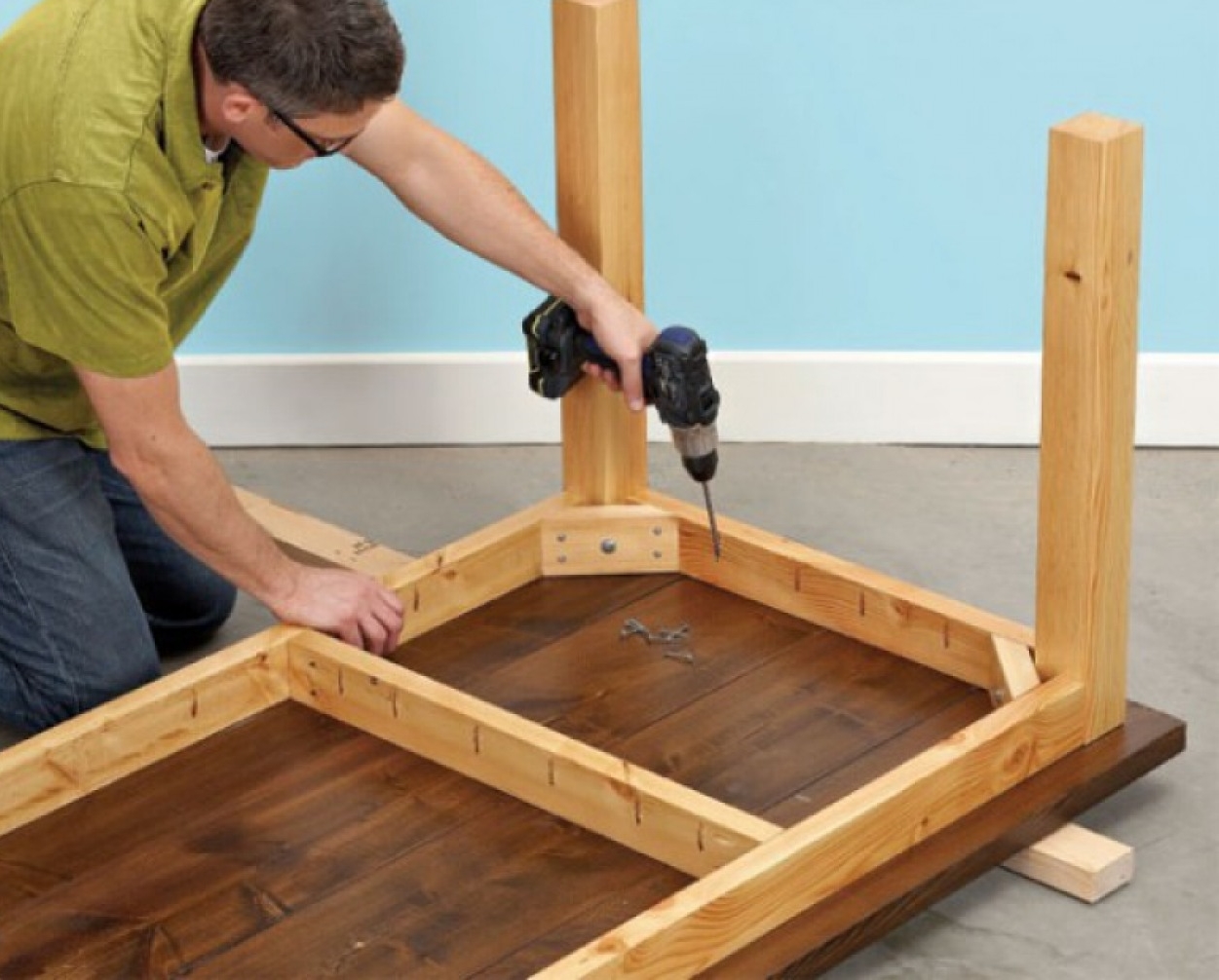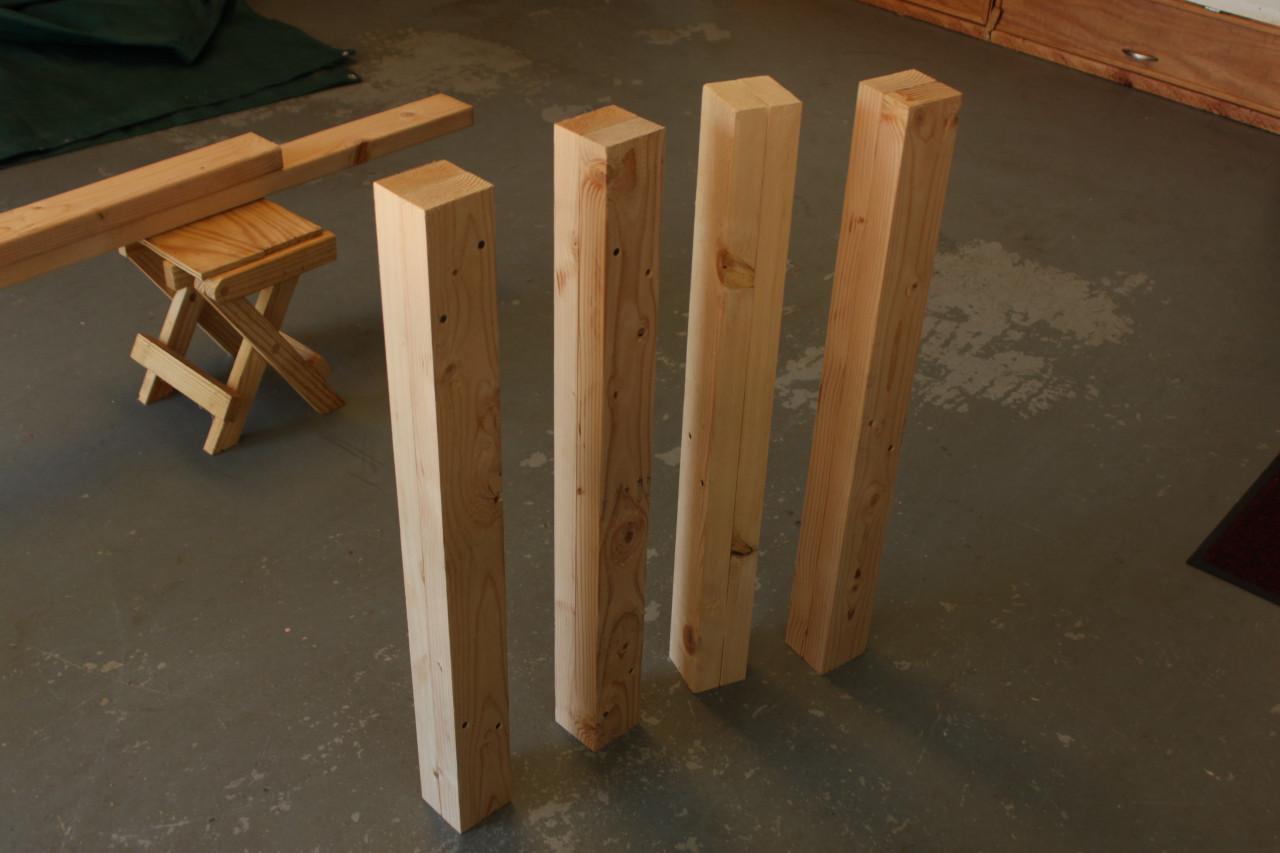How to attach the legs to the table
It doesn't matter for what reasons, but when you need to attach the legs to the table, it turns out that a seemingly simple task entails so many nuances and various "tricks" that attaching the table legs to the table top turns into a whole adventure. Especially for those who are doing this for the first time.
What are furniture supports (legs)?
In general, furniture supports are designed to fulfill a protective and aesthetic function.
Nevertheless, despite all the variety of design, there are three main types of legs:
- Solid. The most common classic version. It can be made of wood, plastic or metal.
- Sliding. A more technologically advanced solution that can be adjusted in height or, less often, in width.
- Decorative. The materials can be used in a variety of ways, since its function is, rather, design.
All these types suggest either their own, unique, or compatible installation method. In addition, the number of furniture supports also affects the mounting option. So, in addition to the classic solution with four supports, there are tables on three or even one.

How do I attach the legs to the countertop?
There are two main options for mounting supports: removable and non-removable. The first assumes the presence of auxiliary fittings, while using the second method, furniture supports can be attached directly to the surface.
The implementation of a non-removable installation of supports requires carpentry skills, due to the peculiarity of the installation technology. In addition, experience in carrying out such work is also desirable, which is associated with the influence of the so-called seasonal deformations of the wood structure. You need to be able to take this into account.
Materials used
Depending on the type of support, as well as design features, the mount for the table legs may require:
- For plates: mounting platform, bolts, screws.
- For Z and 8-shaped holders: holders themselves, screws, self-tapping screws.
- For wooden clamps: self-tapping screws and, in fact, clamps.
- When installing with T-nuts: lug bolts, nuts.
- For non-removable mounting: drawers, screws.

Required tools
The above methods require the use of "their" tool. Nevertheless, it makes sense to keep a complete set of everything you need close at hand:
- Screwdriver, screwdriver set.
- Chisel: thin, wide flat, and also narrow semicircular.
- Drill with a set of wood drills.
- Hammer, pliers.
- Hacksaw.

How to screw the legs to the table?
There are many ways to attach furniture supports to the table:
- Using surface plates.
- With the use of driving sleeves (T-nuts).
- On the screws.
- Through wooden clamps.
- Using Z-shape holders.
- With 8-shaped clips.
- On grooved spacers.
- Couplers.

Below are some of the most common mounting methods.
Fixing the legs to the table top using plates
Surface plates are mounted on each of the four sides on the inside of the worktop. To attach the leg to the plate, a threaded pin and a counterpart - a nut-sleeve are supplied. It needs to be screwed into the top of the leg.
For reliability, it makes sense to apply glue to the inside of the hole before screwing the sleeve into the wood. Installation is carried out by sequentially screwing the pin into the nut, and then screwing the support to the plate.
Using T-nuts
Another option for the pin connection, only with the use of drive sleeves. This method is suitable for countertops, the surface of which will subsequently have an additional coating, since the sleeve is hammered from the front side, so that the mating part is accessible from the inside out.
Otherwise, the legs are attached to the tabletop according to the same principle as with the mounting option using plates.
How to make legs yourself?
Without proper experience and special equipment, a full-fledged furniture support, most likely, will not work. Nevertheless, if you need a temporary replacement for a broken support, or it will stand where appearance is not important, you can try to make it yourself.
To do this, you need a bar, preferably a square section. Next, you need to saw off a part of the required length from the lamella and carry out its processing: grind, remove sharp corners and clean with sandpaper. If desired, the "leg" can be opened with stain and varnish, and then attached to the table top using the already known options for attaching the legs to the table top.
Wood is the most readily available material and the easiest to process. This should be taken into account when deciding whether to make a support yourself.

Thus, the ability to "deal" with a broken leg or to correct the weakened fastening of the table legs to the table top will be useful in any case, since at home tables and chairs are subject to the greatest wear and tear among all available furniture. It is known that there is nothing more annoying than a rocking table!
Video: how to attach the legs to the table using metal mounts








